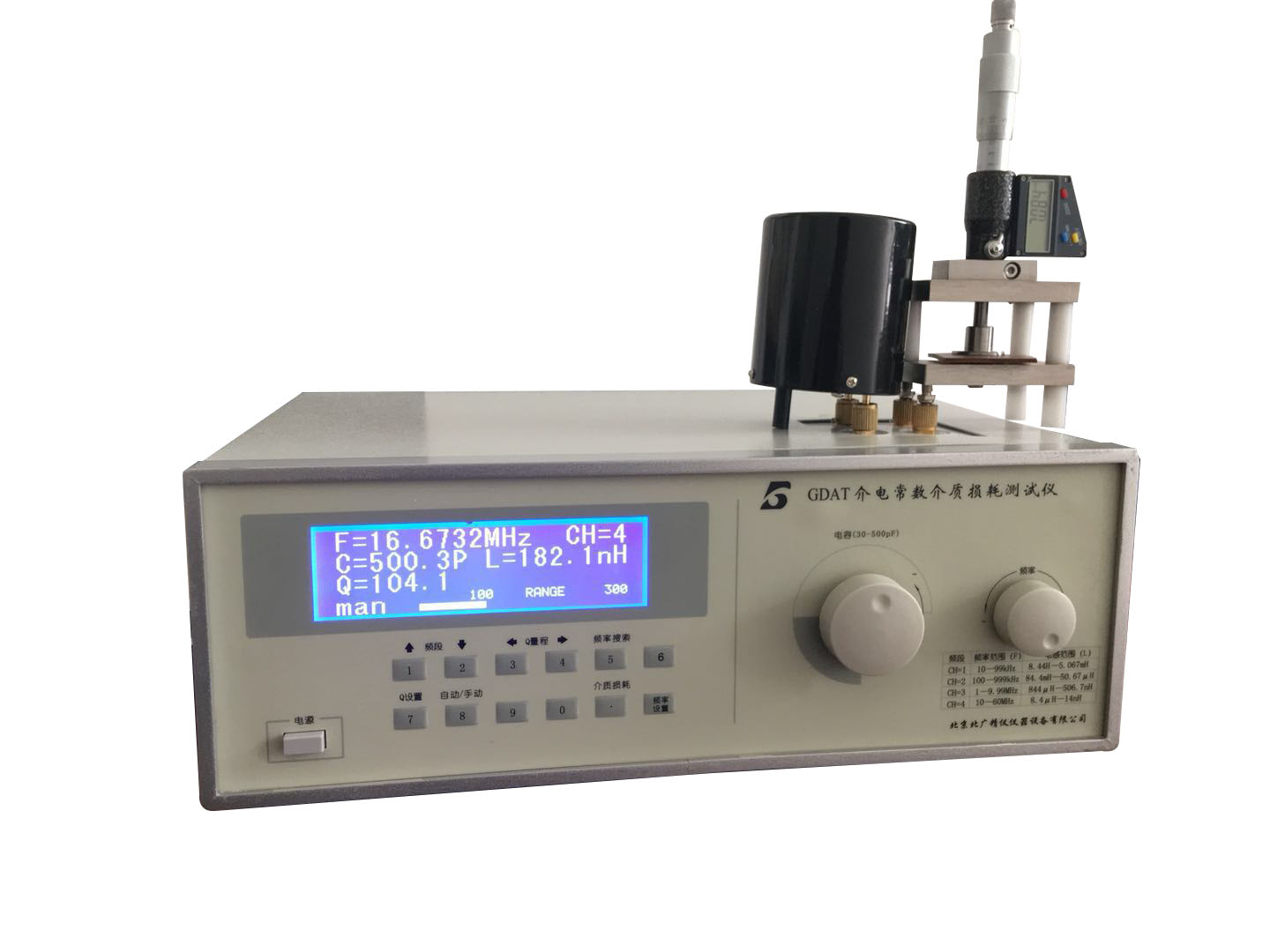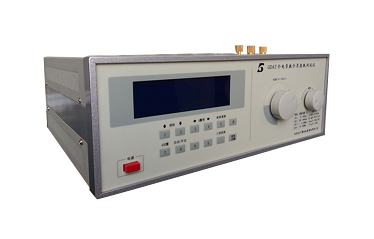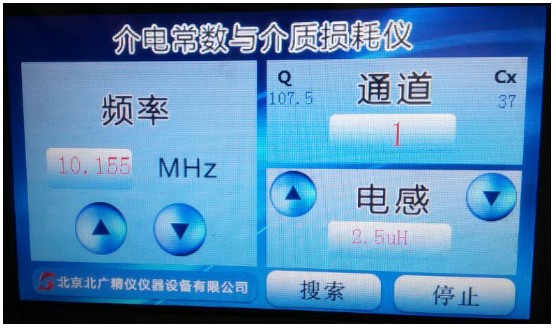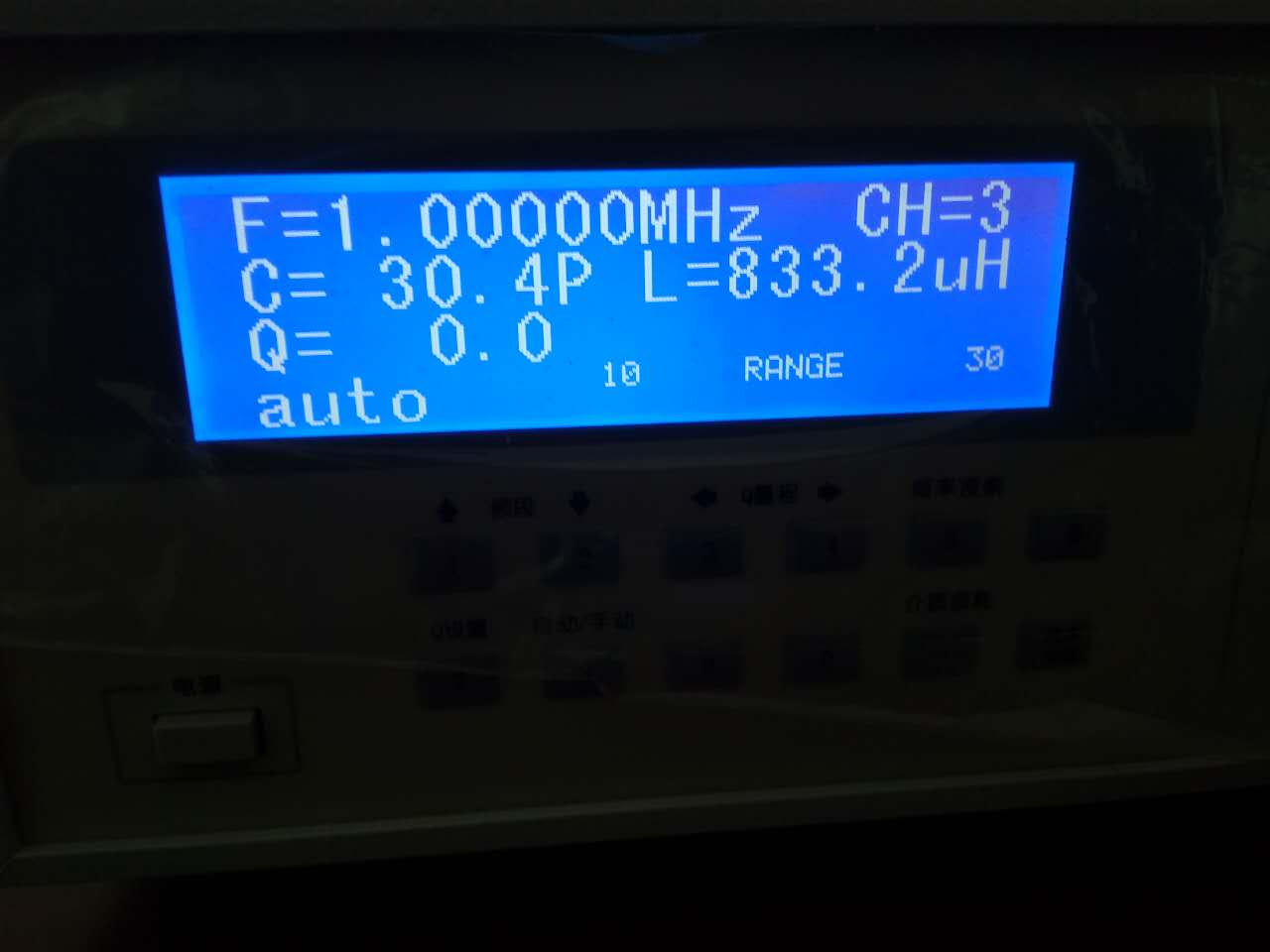
介质损耗因数测试仪 仪器特点:
☆接线简单(正接法两根线,反接可使用一根线),所有电缆线均有接地屏蔽,所以都能拖地使用,测量电压缓升、缓降,全自动测量,结果直读,无须换算。
☆多种测量方式 可选择正/反接线、内/外标准电容器和内/外试验电压进行测量。正接线可测量高压介损。
☆ 抗震性能 仪器可承受长途运输中强烈震动颠簸而不会损坏。
☆ 抗干扰能力强 采用自动跟踪干扰抵偿电路,将矢量运算法与移相法结合,有效地消除强电场干扰对测量的影响,适用于500kV及其以下电站的现场试验。
☆CVT测量 独特自激法测量CVT功能,不需外加任何设备,可完成不可拆头CVT的测量。一次接线(三根电缆,不用倒线),一个测量过程(大约1分钟),两个最终测量结果(C1和C2的介损及电容值)。测量过程中文显示,能实时监测自激电流值和试验电压(高压)值。能消除引线对测试的影响,测量结果准确可靠。
☆VFD显示 采用新颖的大屏幕VFD点阵显示器,在严冬和盛夏都能清晰显示。全中文操作菜单,操作提示各种警告信息,直观明了,不需查阅说明书即可操作。
☆打印 仪器附有微型打印机,以中文方式打印输出测量结果及状态。
☆RS232仪器具有RS232接口,与计算机连接便于数据的统计和处理及保存。
☆可选购与计算机通信应用程序。
介质损耗因数测试仪 测试注意事项
a.本仪器应水平安放;
b.如果你需要较精确地测量,请接通电源后,预热30分钟;
c.调节主调电容或主调电容数码开关时,当接近谐振点时请缓调;
d.被测件和测试电路接线柱间的接线应尽量短,足够粗,并应接触良好、可靠,以减少因接线的电阻和分布参数所带来的测量误差;
e.被测件不要直接搁在面板顶部,离顶部一公分以上,必要时可用低损耗的绝缘材料如聚苯乙烯等做成的衬垫物衬垫;
f.手不得靠近试件,以免人体感应影响造成测量误差,有屏蔽的试件,屏蔽罩应连接在低电位端的接线柱。
介质损耗:绝缘材料在电场作用下,由于介质电导和介质极化的滞后效应,在其内部引起的能量损耗。也叫介质损失,简称介损。在交变电场作用下,电介质内流过的电流相量和电压相量之间的夹角(功率因数角Φ)的余角δ称为介质损耗角。
损耗因子也指耗损正切,是交流电被转化为热能的介电损耗(耗散的能量)的量度,一般情况下都期望耗损因子低些好。

概念:
电介质在外电场作用下,其内部会有发热现象,这说明有部分电能已转化为热能耗散掉,电介质在电场作用下,在单位时间内因发热而消耗的能量称为电介质的损耗功率,或简称介质损耗(diclectric loss)。介质损耗是应用于交流电场中电介质的重要品质指标之一。介质损耗不但消耗了电能,而且使元件发热影响其正常工作。如果介电损耗较大,甚至会引起介质的过热而绝缘破坏,所以从这种意义上讲,介质损耗越小越好。
表征:
电介质在恒定电场作用下,介质损耗的功率为
W=U2/R=(Ed)2S/ρd=σE2Sd
定义单位体积的介质损耗为介质损耗率为
ω=σE2
在交变电场作用下,电位移D与电场强度E均变为复数矢量,此时介电常数也变成复数,其虚部就表示了电介质中能量损耗的大小。
D,E,J之间的相位关系图
D,E,J之间的相位关系图
如图所示,从电路观点来看,电介质中的电流密度为
J=dD/dt=d(εE)/dt=Jτ iJe
式中Jτ与E同相位。称为有功电流密度,导致能量损耗;Je,相比较E超前90?,称为无功电流密度。
定义
tanδ=Jτ/Je=ε〞/εˊ
式中,δ称为损耗角,tanδ称为损耗角正切值。
损耗角正切表示为获得给定的存储电荷要消耗的能量的大小,是电介质作为绝缘材料使用时的重要评价参数。为了减少介质损耗,希望材料具有较小的介电常数和更小的损耗角正切。损耗因素的倒数Q=(tanδ)-1在高频绝缘应用条件下称为电介质的品质因素,希望它的值要高。
仪器技术指标:
☆Q值测量:
a.Q值测量范围:2~1023。 b.Q值量程分档:30、100、300、1000、自动换档或手动换档。
c.标称误差
频率范围:20kHz~10MHz; 固有误差:≤5%?满度值的2%;工作误差:≤7%?满度值的2%;
频率范围:10MHz~60MHz; 固有误差:≤6%?满度值的2%;工作误差:≤8%?满度值的2%。
☆电感测量:
a.测量范围:14.5nH~8.14H。
b.分 档:分七个量程。
0.1~1μH, 1~10μH, 10~100μH,
0.1~lmH, 1~10mH, 10~100mH, 100 mH~1H。
☆电容测量:
a.测量范围:1~460pF(460pF以上的电容测量见使用规则);
b.电容量调节范围
主调电容器:30~500pF; 准 确 度:150pF以下?1.5pF;150pF以上?1%;
注:大于直接测量范围的电容测量见使用规则
☆振荡频率:
a.振荡频率范围:10kHz~50MHz;
b.频率分段(虚拟)
10~99.9999kHz
100~999.999kHz
1~9.99999MHz
10~60MHz
c.频率误差:3?10-5?1个字。
☆仪器正常工作条件
a.环境温度:0℃~ 40℃; b.相对湿度:<80%; c.电源:220V?22V,50Hz?2.5Hz。
☆其他
a.消耗功率:约25W; b.净重:约7kg; c.外型尺寸:(l?b?h)mm:380?132?280。
☆Q合格指示预置功能
预置范围:5~1000。
☆主要配置:
a.测试主机一台;
b.电感9只;
c.夹具一 套
低频电桥
一般为高压电桥,这不仅是由于灵敏度的缘故,也因为在低频下正是高电压技术特别对电介质损耗关注的问题。电容臂和测量臂两者的阻抗大小在数量级上相差很多,结果,绝大部分电压都施加在电容Cx和C}上,使电压分配不平衡 上面给出的电桥平衡条件只是当低压元件对高压元件屏蔽时才成立。同时,屏蔽必须接地,以保证平衡稳定。如图A. 2所示。屏蔽与使用被保护的电容C、和C、是一致的,这个保护对于Ch来说是必不可少的。
由于选择不同的接地方法,实际上形成了两类电桥。
带瓦格纳(Wagner)接地电路的西林电桥
图A.2示出了使电桥测量臂接线端与屏蔽电位相等的方法。这种方法是通过使用外接辅助桥臂ZA、ZB(瓦格纳接地电路),并使这两个辅助桥臂的中间点P接到屏蔽并接地。调节辅助桥臂(实际为
ZB)以使在ZA和ZB上的电压分别与电桥的电容臂和测量臂两端的电压相等.显然,这个解决方法包括两个桥即主桥AMNB和辅桥AMPB(或ANPB)同时平衡。通过检测器从一个桥转换到另一个桥逐
次地逼近平衡而最终达到二者平衡.用这种方法精度可以提高一个数量级,这时,实际上该精度只决定于电桥元件的精密度平衡用这种方法精度可以提高一个数量级,这时,实际上该精度只决定
于电桥元件的精密度。
必须指出,只有当电源的两端可以对地绝缘时才使用上述特殊的解决方法。如果不可能对地绝缘,则必须使用更复杂的装置(双屏蔽电桥)。
高频电桥
由于它不再是一个高压电桥,因此承受电压U1的臂能容易地引人可调元件;替代法在此适用
还应指出,带有分开的初级绕组的电桥允许电源和检测器互换位置。其平衡与在次级绕组中对应
的安匝数的补偿相符.
电介质的用途
电介质一般被用在两个不同的方面:
用作电气回路元件的支撑,并且使元件对地绝缘及元件之间相互绝缘;
用作电容器介质
Instrument features:
☆Simple wiring (two wires for forward connection, one wire can be used for reverse connection), all cables have grounding shielding, so they can be dragged to the ground for measurement of voltage rise and fall, fully automatic measurement, direct reading of results, no need for conversion.
Multiple measurement methods are available, including positive/reverse wiring, internal/external standard capacitors, and internal/external test voltages for measurement. Positive wiring can measure high voltage dielectric loss.
The seismic performance instrument can withstand strong vibrations and bumps during long-distance transportation without damage.
☆Strong anti-interference ability adopts automatic tracking interference compensation circuit, combining vector operation method with phase shifting method, effectively eliminating the influence of strong electric field interference on measurement, suitable for on-site testing of 500kV and below power stations.
The unique self-excited method for measuring CVT function does not require any external equipment and can complete the measurement of non removable head CVT. One wiring (three cables, no need to invert), one measurement process (approximately 1 minute), and two final measurement results (dielectric loss and capacitance values of C1 and C2). The measurement process is displayed in Chinese and can monitor the self-excited current value and test voltage (high voltage) value in real time. It can eliminate the influence of leads on testing, and the measurement results are accurate and reliable.
The VFD display adopts a novel large screen VFD dot matrix display, which can display clearly in both severe winter and summer. The full Chinese operation menu provides various warning messages, which are intuitive and clear, and can be operated without consulting the manual.
The printing instrument is equipped with a micro printer to print and output measurement results and status in Chinese.
The RS232 instrument has an RS232 interface, which facilitates data statistics, processing, and storage when connected to a computer.
☆Optional communication applications with computers.
Testing precautions
a. This instrument should be placed horizontally;
b. If you need more accurate measurement, please preheat for 30 minutes after turning on the power;
c. When adjusting the main capacitor or digital switch of the main capacitor, please adjust slowly when approaching the resonance point;
d. The wiring between the tested component and the test circuit terminal should be as short and thick as possible, and should have good and reliable contact to reduce measurement errors caused by the resistance and distribution parameters of the wiring;
e. Do not place the test piece directly on the top of the panel, more than one centimeter away from the top. If necessary, use low loss insulation materials such as polystyrene to make padding;
f. Hands should not be close to the test piece to avoid measurement errors caused by human induction. For shielded test pieces, the shielding cover should be connected to the terminal at the low potential end.
Dielectric loss: The energy loss caused by the hysteresis effect of dielectric conductivity and polarization in insulating materials under the action of an electric field. Also known as dielectric loss, abbreviated as dielectric loss. The residual angleδof the angle (power factor angleΦ) between the current phasor and voltage phasor flowing through the dielectric under the action of an alternating electric field is called the dielectric loss angle.
The loss factor also refers to the loss tangent, which is a measure of the dielectric loss (dissipated energy) of alternating current converted into thermal energy. Generally, it is expected that the loss factor should be lower.
Concept:
Under the action of an external electric field, a dielectric material will generate heat inside, indicating that some electrical energy has been converted into heat energy and dissipated. The energy consumed by a dielectric material due to heat generation per unit time under the action of an electric field is called dielectric loss power, or simply dielectric loss. Dielectric loss is one of the important quality indicators of dielectrics applied in AC electric fields. Dielectric loss not only consumes electrical energy, but also causes heating of components, affecting their normal operation. If the dielectric loss is large, it may even cause overheating of the medium and insulation damage, so in this sense, the smaller the dielectric loss, the better.
characterization:
The power of dielectric loss under constant electric field is
W=U2/R=(Ed) 2S/ρd=σE2Sd
Define the dielectric loss per unit volume as the dielectric loss rate
ω=σE2
Under the action of an alternating electric field, both the potential shift D and the electric field strength E become complex vectors, and the dielectric constant also becomes complex. Its imaginary part represents the magnitude of energy loss in the dielectric.
D. Phase relationship diagram between E and J
D. Phase relationship diagram between E and J
As shown in the figure, from a circuit perspective, the current density in the dielectric is
J=dD/dt=d(εE)/dt=Jτ iJe
In the equation, Jτis in phase with E. It is called active current density, which leads to energy loss; Je,Compared to being 90?ahead of E, it is called reactive current density.
definition
tanδ=Jτ/Je=ε〞/εˊ
In the formula,δis called the loss angle, and tanδis called the tangent of the loss angle.
The loss tangent is expressed as the amount of energy required to obtain a given stored charge, and is an important evaluation parameter when using dielectrics as insulating materials. In order to reduce dielectric loss, it is hoped that the material has a smaller dielectric constant and smaller loss tangent. The reciprocal of the loss factor Q=(tanδ) -1 is referred to as the quality factor of the dielectric under high-frequency insulation application conditions, and it is hoped that its value will be high.
Instrument technical specifications:
☆Q-value measurement:
a. Q-value measurement range: 2-1023. b. Q-value range: 30, 100, 300, 1000, automatic or manual shifting.
c. Nominal error
Frequency range: 20kHz to 10MHz; Inherent error:≤5%?2% of the full-scale value; Work error:≤7%?2% of the full-scale value;
Frequency range: 10MHz to 60MHz; Inherent error:≤6%?2% of the full-scale value; Work error:≤8%?2% of the full-scale value.
☆Inductance measurement:
a. Measurement range: 14.5nH~8.14H.
b. Classification: Divided into seven ranges.
0.1~1μH, 1~10μH, 10~100μH,
0.1~lmH, 1~10mH, 10~100mH, 100 mH to 1H.
☆Capacitance measurement:
a. Measurement range: 1-460pF (see usage rules for capacitance measurements above 460pF);
b. Capacity adjustment range
Main capacitor: 30-500pF; Accuracy: below 150pF?1.5pF; Above 150pF?1%;
Note: For capacitance measurements larger than the direct measurement range, please refer to the usage rules
☆Oscillation frequency:
a. Oscillation frequency range: 10kHz to 50MHz;
b. Frequency segmentation (virtual)
10~99.9999kHz
100~999.999kHz
1~9.99999MHz
10~60MHz
c. Frequency error: 3?10-5?1 word.
☆Normal working conditions of the instrument
a. Environmental temperature: 0℃to 40℃; b. Relative humidity:< 80%; c. Power supply: 220V?22V, 50Hz?2.5Hz.
☆Other
a. Power consumption: approximately 25W; b. Net weight: approximately 7kg; c. Dimensions: (l?b?h) mm: 380?132?280.
☆Q qualified indication preset function
Preset range: 5-1000.
☆Main configuration:
a. Test one host;
b. 9 inductors;
c. A set of fixtures
Low frequency bridge
Generally, it is a high-voltage bridge, which is not only due to sensitivity, but also because at low frequencies, high-voltage technology is particularly concerned about dielectric loss. The impedance sizes of the capacitor arm and the measuring arm differ significantly in order of magnitude. As a result, the majority of the voltage is applied to capacitors Cx and C, leading to an imbalance in voltage distribution. The bridge balance condition given above only holds when the low-voltage component shields the high-voltage component. At the same time, the shielding must be grounded to ensure balance and stability. As shown in Figure A As shown in Figure 2. Shielding and using the protected capacitors C and C are consistent, and this protection is essential for Ch.
Due to the selection of different grounding methods, two types of electric bridges are actually formed.
Xilin bridge with Wagner grounding circuit
Figure A.2 shows the method of making the measuring arm terminals of the bridge equal to the shielding potential. This method involves using external auxiliary bridge arms ZA and ZB (Wagner grounding circuit), and connecting the midpoint P of these two auxiliary bridge arms to the shield and ground. Adjust the auxiliary bridge arm (actually
ZB) to ensure that the voltage on ZA and ZB is equal to the voltage across the capacitor arm and measurement arm of the bridge, respectively Obviously, this solution involves balancing two bridges simultaneously, namely the main bridge AMNB and the auxiliary bridge AMPB (or ANPB). Switching from one bridge to another through a detector
Approaching equilibrium in a secondary manner and ultimately achieving balance between the two By using this method, the accuracy can be improved by an order of magnitude. In this case, the accuracy actually depends only on the precision balance of the bridge components. By using this method, the accuracy can be improved by an order of magnitude. In this case, the accuracy actually depends only on the precision balance of the bridge components
Precision of bridge components.
It must be pointed out that the above special solution should only be used when the two ends of the power supply can be insulated from the ground. If it is impossible to insulate from the ground, a more complex device (double shielded bridge) must be used.
High-frequency bridge
Since it is no longer a high-voltage bridge, the arm that can withstand voltage U1 can easily be connected to adjustable components; The substitution method applies here
It should also be pointed out that a bridge with separate primary windings allows the power supply and detector to exchange positions. Its balance corresponds to the secondary winding
The compensation for the ampere turns is consistent
The use of dielectrics
Dielectric materials are generally used in two different ways:
Used as a support for electrical circuit components, and to insulate the components from ground and from each other;
Used as a dielectric for capacitors
业务咨询:932174181 媒体合作:2279387437 24小时服务热线:15136468001 盘古机械网 - 全面、科学的机械行业免费发布信息网站 Copyright 2017 PGJXO.COM 豫ICP备12019803号